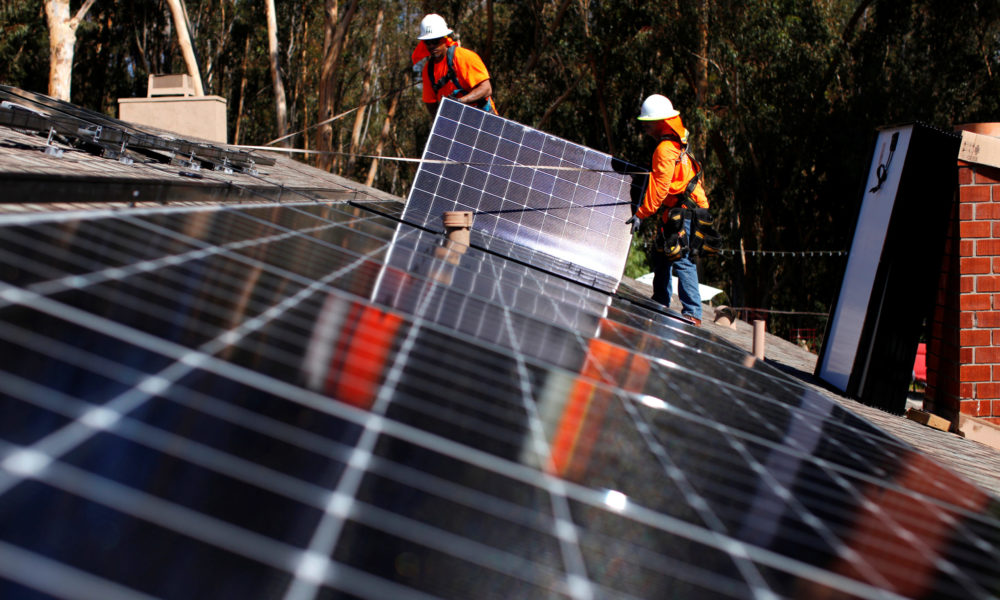For months, the US solar industry has been frozen by a pending trade case and the uncertainty it has brought. A new move by the Biden administration proposes to fix that.
The solar trade case
In February, a small California-based solar panel manufacturer filed a complaint with the Department of Commerce alleging that China, the subject of other US trade tariffs for solar, was illegally bypassing tariffs by channeling solar products through a few neighboring countries. The manufacturer was seeking tariffs of potentially hundreds of percent on products from those other countries.
Those taxes, or anything similar coming out of the Department of Commerce investigations, could not only have dramatically changed the economics of future projects, but also have been applied retroactively. Those potential financial hits have made it really hard for solar project developers to commit to projects, with serious consequences for solar power’s continued development. The Solar Energy Industries Association (SEIA) had tallied up hundreds of projects cancelled or delayed, totaling more than 50 gigawatts—more than twice what the US solar industry installed during 2021. And it had warned of 100,000 jobs at risk, meaning almost half the US solar workforce. A letter from a bipartisan group of 22 US senators had expressed their “serious concern” about the investigation, and its effect on solar developers and ratepayers.
What the federal government will do
And now a just-announced plan from the Biden administration looks set to unstick the logjam, and save those projects and jobs while encouraging more domestic production of solar components. It proposes to do that through three pieces:
1. “Authorize use of the Defense Production Act (DPA) to accelerate domestic production of clean energy technologies, including solar panel parts”—plus building insulation, heat pumps, equipment for making “clean electricity-generated fuels”, and “[c]ritical power grid infrastructure like transformers.” The administration says that the effort will involve encouraging strong labor standards, and attention to good “environmental justice outcomes” through a focus on the clean energy transition in communities “historically overburdened by legacy pollution.”
2. “Put the full power of federal procurement to work spurring additional domestic solar manufacturing capacity by directing the development of master supply agreements, including ‘super preference’ status”—using the power of the federal purse to boost “made-in-America” solar products, and “partner[ing] with state and local governments and municipal utilities” to drive more demand.
3. “Create a 24-month bridge as domestic manufacturing rapidly scales up to ensure the reliable supply of components that US solar deployers need to construct clean energy projects and an electric grid for the 21st century, while reinforcing the integrity of our trade laws and processes”—this is the part that most directly addresses the uncertainty that had brought so much solar to a standstill. By waiving new tariffs for two years, the administration aims to let solar panels flow again without fear of surprise or retroactive costs.
How industry and supporters are reacting
Reactions to the surprise announcement have been very positive. SEIA, which chiefly represents developers and installers, celebrated the jobs saved and the continuation of solar’s job-creation potential, and praised the president’s “thoughtful approach to addressing the current crisis of the paralyzed solar supply chain.”
The American Clean Power Association (ACP), which represents a range of clean energy technologies, similarly applauded, calling the announcement “a bold act of leadership.” ACP CEO Heather Zichal said that the moves “will rejuvenate the construction and domestic manufacturing of solar power by restoring predictability and business certainty…”
Many lawmakers were equally enthusiastic. Sen. Jacky Rosen of Nevada, one of the leaders on the letter urging the administration to act, called the proposal a “positive step [that] will save US solar jobs, strengthen domestic solar manufacturing, and help us achieve our clean energy goals.”
What’s next
Where does it go from here? Commerce will continue assessing the merits of the original case. The industry is “confident that a review of the facts will result in a negative determination,” meaning that no new tariffs will come into place. Some US manufacturers see it differently, and seem likely to challenge the administration’s move in the meantime.
Meanwhile, we’ll be looking for the administration’s announcement to get solar back on track. A successful effort will give the US industry a couple years of breathing space, and investments in domestic manufacturing with strong labor standards may well boost our capacity to produce solar panels here at home.
Resolution of the uncertainty that has threatened solar’s considerable momentum is a key piece of keeping that momentum going. It’s not the only piece—we’re still looking to Congress to extend the tax credits that have been so powerful for driving renewable energy as part of a broader budget reconciliation package—but it’s a welcome one. Solar can get back to doing what it does so well: reducing our dependence on polluting sources of electricity, giving us better options for powering our homes and businesses, and creating jobs.

